| < Previous page | Next page > |
Watershed Scale, Single YearWatershed Scale Wood Recuitment
Parameter Description: NetMap's watershed scale wood recruitment tool allows a user to learn about the watershed scale variability of in-stream wood recruitment due to variable riparian forest conditions driven by history of timber harvest, agriculture, urbanization, wildfire and other land uses and natural disturbance. The model utilizes LEMMA data in the states of Washington, Oregon and California. For other areas, site specific custom vegetation data are required and it might necessitate TerrainWorks running some pre-processing steps (contact us).
NOTE, prior to running this tool, you will need to access and process Vegetation Data, such as LEMMA (see Tool).
Model Description: The model calculates a single year recruitment potential from mortality (non stochastic tree death) for each stream reach in terms of number of pieces per year per reach length (lengths can vary, but the majority are at or near 100 m), by average piece diameter classes. The model uses vegetation data on tree height and stand density using a range of diameter classes; in WA, OR and CA, LEMMA data is used. Contact TerrainWorks if you have other, custom data and would like to run the watershed scale wood recruitment tool.
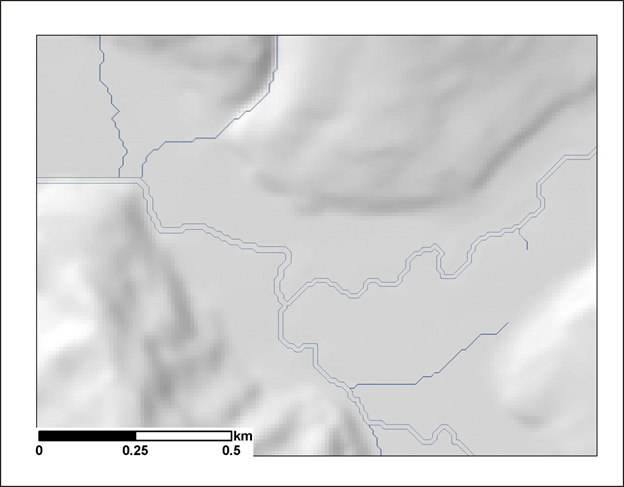 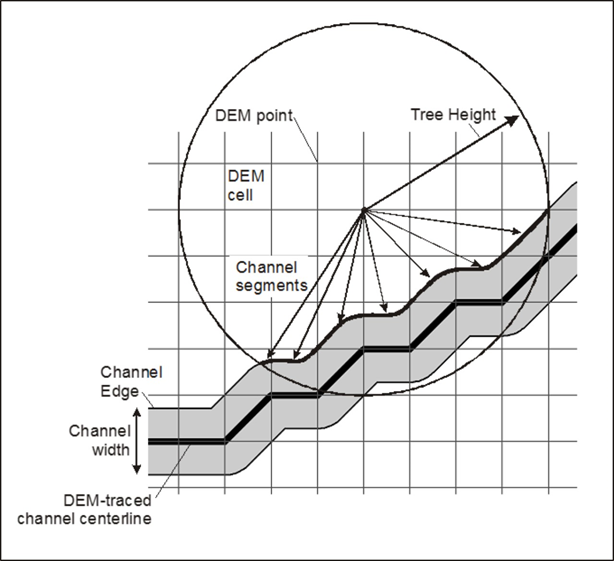 Figures 1 and 2. To estimate wood recruitment from riparian zones, we need to know where the edge of the channels are. Average channel width is estimated from regional regressions to drainage area and a buffer is applied to the channel centerlines to provide approximate channel-edge locations. Lake and reservoir shore lines can also be included. Each DEM point lies within a specific stand type. For each stand type, we have the number of trees, by size class (DBH, height) and species, and we have a mortality rate for each size-class + species combination. For each DEM point, for each size + species class, identify all the channel segments within a tree height of the point.
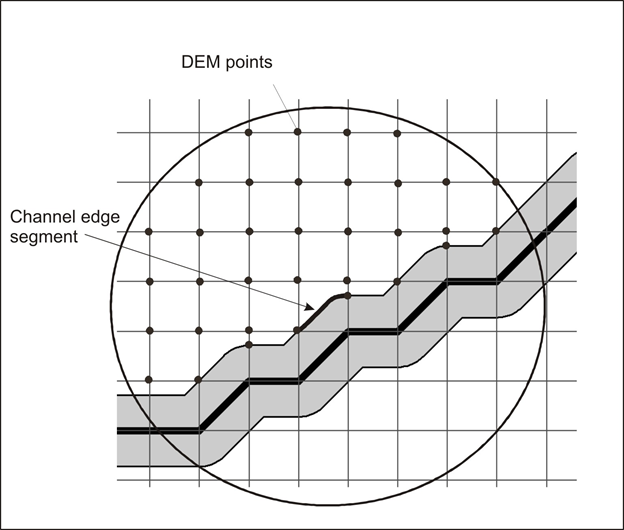 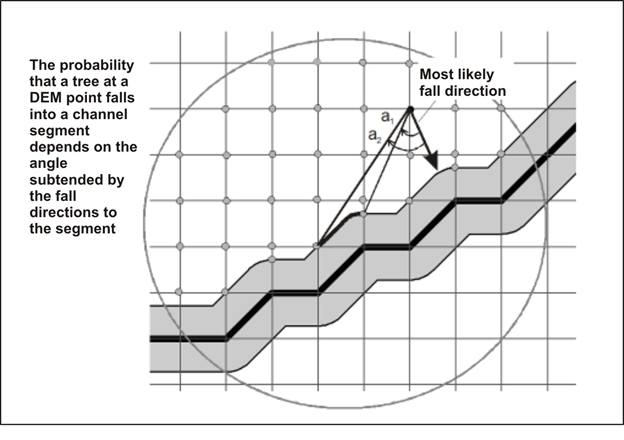 Figures 3 and 4. Then, for each stream segment, find every DEM point for which a tree standing at the point could potentially fall into the segment, based on tree height and channel-edge locations. The probability that a tree at a DEM point falls into a channel segment depends on the angle subtended by the fall directions to the segment. Every four DEM points define a DEM cell. Integrate the probability of the four corners over the cell to estimate the probability that a tree in the cell will fall into the segment. Sum over all cells containing trees that could fall into the segment. Repeat for all stream-edge segments.
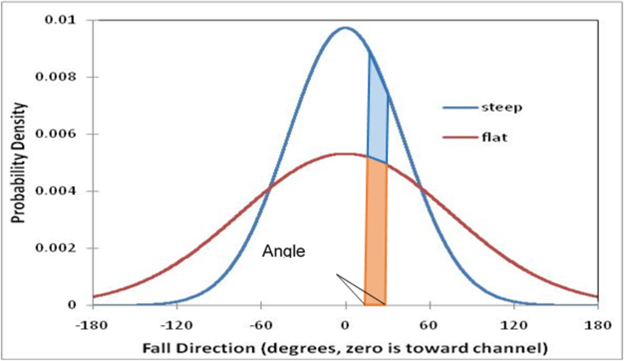 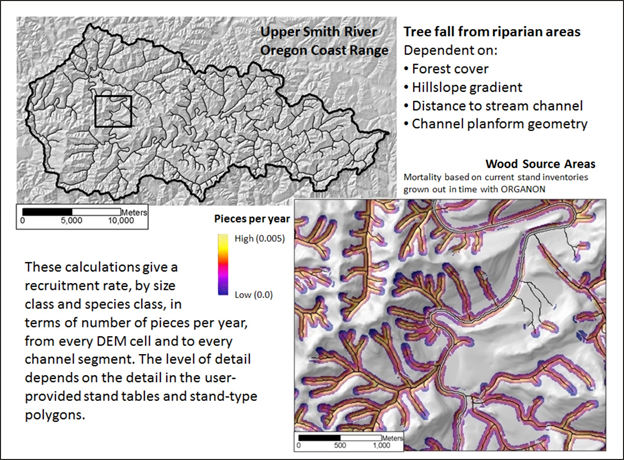 Figures 5 and 6. The probability that a falling tree hits a channel depends on steepness of the channel-adjacent slope.
The watershed wood model tracks live and dead trees separately; live trees have only 5 size classes (3-25cm, 25-50, 50-75, 75-100,>100) and dead trees have four (< 50cm, 50-75, 75-100, >100). A stand height is specified only for live trees, and only one height is given. The default mortality rate for live trees is 0.03 and for dead trees (snags) is 0.013, but users can adjust the mortality rates for conifers and hardwoods. Mortality rates are the same over all species classes, which with Lemma are hardwood and conifer. Dying live trees are not coverted to snags. Location of a falling tree from within a cell is stochastic; choice of tree from the set of trees available to fall in the cell is stochastic (size and species of the falling tree(s) is a random variable - trees are chosen randomly, but stratified by size class and species, from the tree list for the cell). Each falling tree is associated with a specific channel node. The distance of the tree from the channel edge is known, as is the angle of the tree relative to the stream. A taper equation is specified for the tree, so the diameter of the bole is estimate at the point where it intersects the channel edge on each side. We can thus calculate the volume of the piece inside the stream, or the total volume of the entire log.
Each falling tree is associated with a specific channel node. The distance of the tree from the channel edge is known, as is the angle of the tree relative to the stream. A taper equation is specified for the tree, so the diameter of the bole is estimate at the point where it intersects the channel edge on each side. We can thus calculate the volume of the piece inside the stream, or the total volume of the entire log.
With this model, using the Lemma data, we have only a single year of recruitment, so we don't route wood through the system or track wood abundance. We only track recruitment rate. Future versions of the model will include upslope wood sources (landslides, debris flows), piece breakage and fluvial transport and storage of wood.
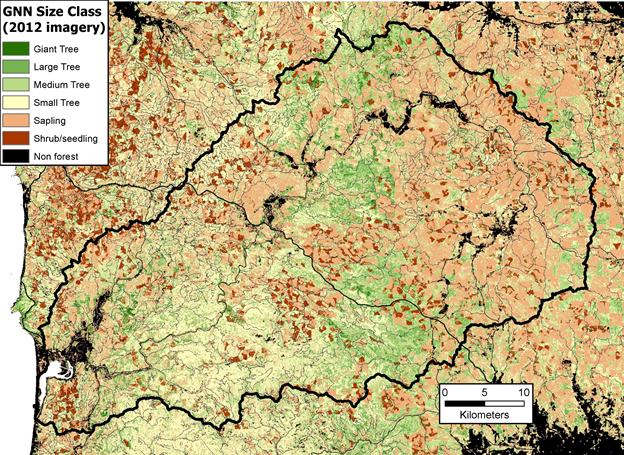 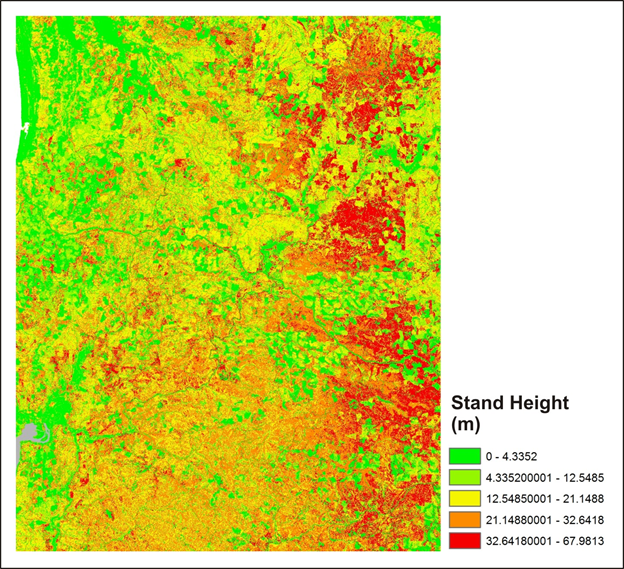 Figures 7 and 8. LEMMA data are used in Washington, Oregon and California.
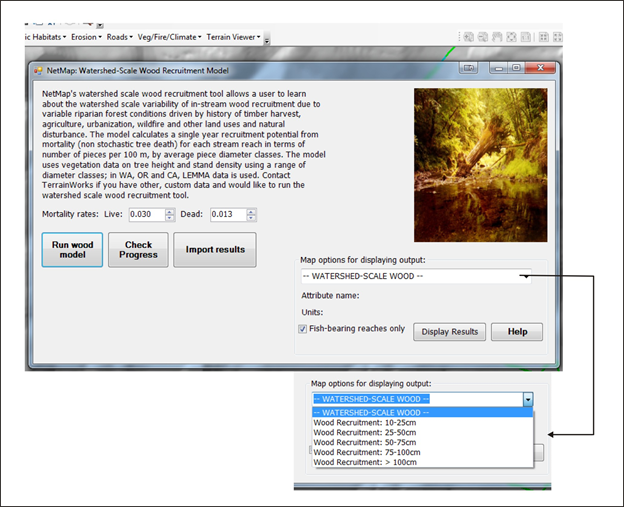 Figure 9. Tool interface for NetMap's watershed scale in-stream wood recruitment tool. User's can set average stand mortality rates for live and dead trees (e.g., 1.5% per year = 0.015).
NOTE, prior to running this tool, you will need to access and process Vegetation Data, such as LEMMA (see Tool).
Example Model Results Follow
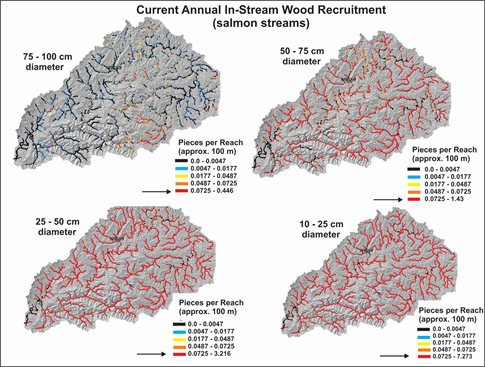 Figure10. Rour in-stream wood diameter classes in the Nehalem watershed in northwestern coastal Oregon. To learn more about the NetMap Watershed Restoration Analysis go here. Note, that wood recruitment rates are per year per reach length; reach lengths in NetMap are generally near 100 m, but there may be a few exceptions (longer and shorter); this attribute provides an indication of potential recruitment per year and may not reflect what is found in any reach in any year, since wood in streams accumulate over time or get transported out of the reach by floods.
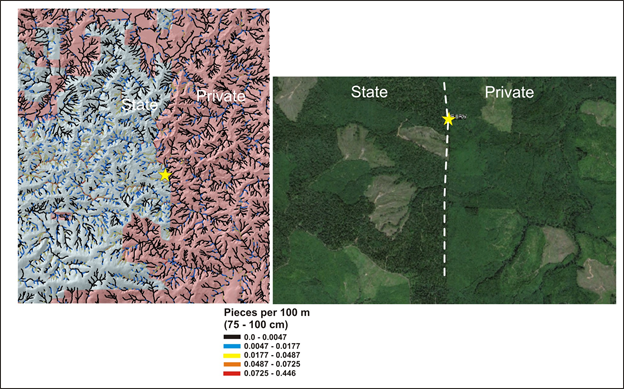 Figure 12.
|